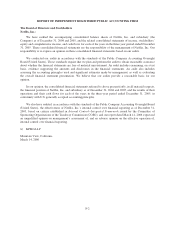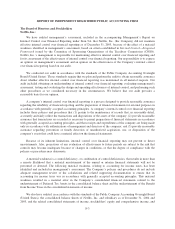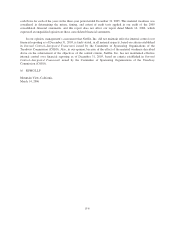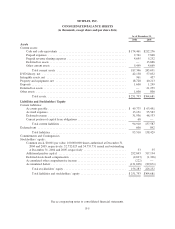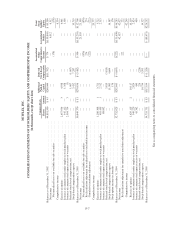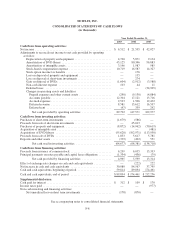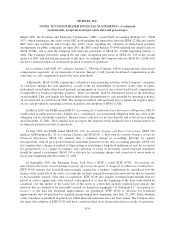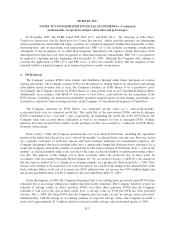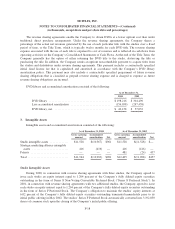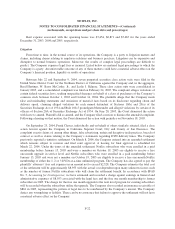NetFlix 2005 Annual Report Download - page 72
Download and view the complete annual report
Please find page 72 of the 2005 NetFlix annual report below. You can navigate through the pages in the report by either clicking on the pages listed below, or by using the keyword search tool below to find specific information within the annual report.NETFLIX, INC.
NOTES TO CONSOLIDATED FINANCIAL STATEMENTS—(Continued)
(in thousands, except share and per share data and percentages)
The Company capitalizes film costs in accordance with Statement of Position 00-2 (“SOP 00-2”)
Accounting by Producers or Distributors of Films. Net capitalized film costs are recorded within DVD Library as
such amounts are currently not material to the consolidated financial statements. Capitalized film costs include
costs to develop and produce movies, which primarily consist of concept development, pre-production and
production. Capitalized film costs are stated at the lower of unamortized cost or estimated fair value on an
individual film basis. Once a film is released, capitalized film production costs shall be amortized in the
proportion that the revenue during the period for each film bears to the estimated total revenue to be received
from all sources for the film (“Ultimate Revenue”) under the individual-film-forecast method as defined in SOP
00-2. In the event a film is not set for production within three years from the time of the first capitalized
transaction, all such costs will be expensed. The Company makes certain estimates and judgments of Ultimate
Revenue for each film based on performance of comparable titles and our knowledge of the industry. Estimates
of Ultimate Revenue are reviewed periodically and are revised if necessary. Unamortized film production costs
are evaluated for impairment each quarter on a film-by-film basis in accordance with the requirements of SOP
00-2. If forecasts of Ultimate Revenue are not sufficient to recover the unamortized film costs for that film, the
unamortized film costs will be written down to fair value.
Amortization of Intangible Assets
Intangible assets are carried at cost less accumulated amortization. The Company amortizes the intangible
assets with finite lives using the straight-line method over the estimated economic lives of the assets, ranging
from approximately 2 to 10 years. See Note 3 for further discussion.
Property and Equipment
Property and equipment are carried at cost less accumulated depreciation. Depreciation is calculated using
the straight-line method over the shorter of the estimated useful lives of the respective assets, generally up to five
years, or the lease term, if applicable.
Impairment of Long-Lived Assets
In accordance with Statement of Financial Accounting Standards (“SFAS”) No. 144, “Accounting for the
Impairment or Disposal of Long-Lived Assets”, long-lived assets such as property and equipment and intangible
assets subject to amortization, are reviewed for impairment whenever events or changes in circumstances
indicate that the carrying amount of an asset group may not be recoverable. Recoverability of asset groups to be
held and used is measured by a comparison of the carrying amount of an asset group to estimated undiscounted
future cash flows expected to be generated by the asset group. If the carrying amount of an asset group exceeds
its estimated future cash flows, an impairment charge is recognized by the amount by which the carrying amount
of an asset group exceeds fair value of the asset group. The Company evaluated its long-lived assets and no
impairment charges were recorded for any of the years presented.
Capitalized Software Costs
The Company capitalizes costs related to developing or obtaining internal-use software. Capitalization of
costs begins after the conceptual formulation stage has been completed. Capitalized software costs are included
in property and equipment, net and are amortized over the estimated useful life of the software, which is
generally one year.
F-12


